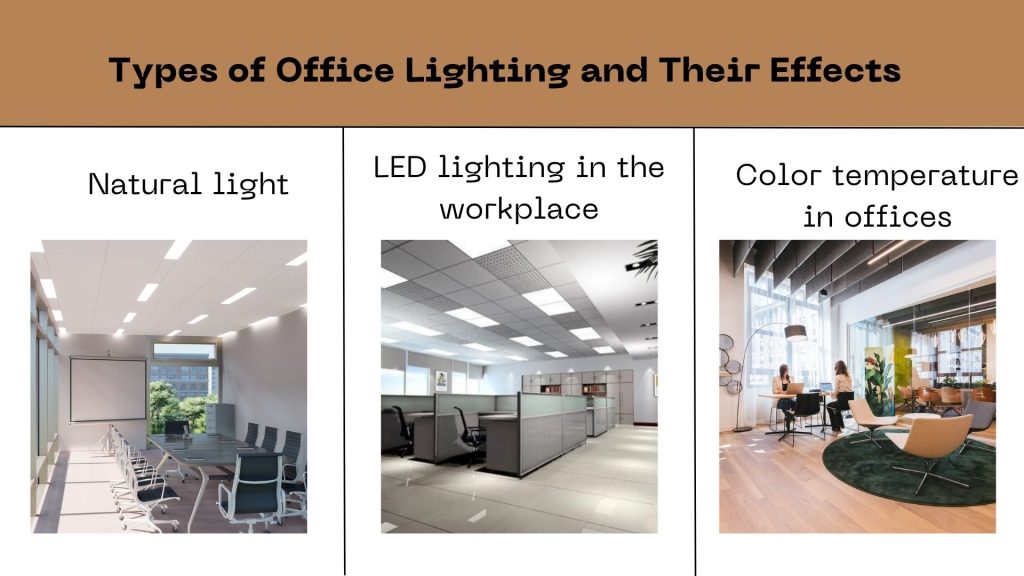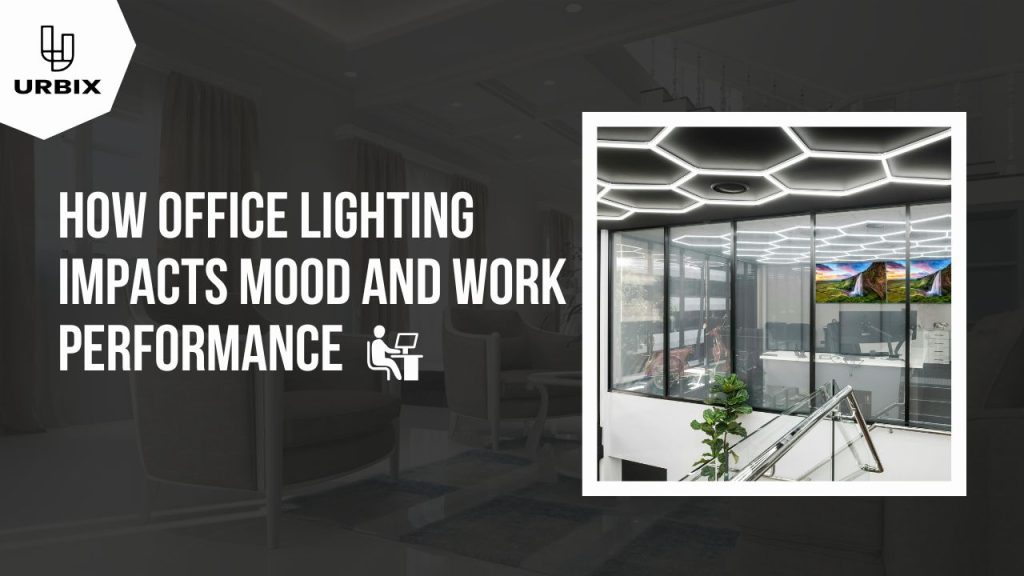Lighting might seem like a minor detail in office design, but it holds incredible power over how we feel, think, and perform. In fast-paced workplaces, where deadlines, meetings, and digital screens dominate the day, Office Lighting becomes more than just a utility; it’s a silent influence on mood, focus, and productivity. A well-lit environment can energize a team, while poor lighting can silently drain motivation and trigger fatigue.
As more businesses prioritize employee well-being, lighting design is becoming a crucial part of modern workplace planning. In this blog, we’ll dive into How Office Lighting Impacts Mood and Work Performance, and how making smart lighting choices can truly transform the way your team works and feels.
The Psychology Behind Lighting and Mood
Ever noticed how your mood lifts when you’re sitting near a sunny window? That’s the power of light on your brain. The Impact of Lighting on Mood is supported by science. Light affects our circadian rhythm, the body’s natural internal clock that regulates sleep, alertness, and emotional balance.
Natural light increases serotonin levels, helping employees feel happier and more alert. In contrast, dim or flickering lights can create discomfort, irritability, and even mild depression. This is especially relevant in enclosed offices where artificial lighting is the primary source of brightness. Studies have shown that employees exposed to consistent, balanced lighting report lower stress and greater job satisfaction.
In short, Lighting Affects Mood more than most people realize, and in a high-stress work environment, even minor improvements can lead to measurable benefits.
Types of Office Lighting and Their Effects
Not all light is created equal. The kind of light used in your office space can determine how focused, alert, or creative your team feels. Let’s break it down:

- Natural light: This is the most powerful form of Office Lighting. It improves mood, reduces eye strain, and supports healthy sleep cycles. Offices with windows and skylights tend to have more energetic and satisfied employees.
- LED lighting in the workplace: LED lights are now standard in modern offices due to their energy efficiency. But color temperature matters; cool LEDs enhance focus, while warm LEDs promote calm.
- Color temperature in offices: Light temperature is measured in Kelvin. A cooler tone (4000K–5000K) promotes alertness, making it suitable for workstations. Warmer tones (2700K–3000K) create a more relaxed feel, ideal for break areas or lounges.
Selecting the Best Lighting for Productivity means balancing function with comfort. You want lights that help people stay focused without causing fatigue.
How Poor Office Lighting Harms Performance
If lighting is poorly designed, it doesn’t just affect comfort; it directly impacts performance. Some of the most common poor Office Lighting Effects include:
- Eye strain from insufficient or harsh lighting
- Frequent headaches due to flickering bulbs
- Fatigue from a lack of visual stimulation
- Low mood and reduced energy throughout the day
These aren’t small issues. They affect how long someone can focus, how accurately they work, and how creative they feel. Over time, poor lighting contributes to disengagement, mistakes, and even employee turnover.
The Workplace Lighting Effects ripple through everything from how your team collaborates to how they feel at the end of the day.
Natural Light vs Artificial Light in the Office
Let’s compare. Natural Light in Office environments leads to better mood, fewer sick days, and sharper focus. It aligns with our biological clock and gives us visual variety. Unfortunately, not every building allows for wide-open windows or direct sunlight.
In such cases, artificial lights, especially smart LED, can mimic the benefits of natural lighting. Dimmable lights, motion sensors, and color-adjusting bulbs give more control to employees and help match lighting with tasks. For example, a marketing team may prefer softer, warmer tones, while finance staff might work better under bright, cool lights.
Balanced Lighting and Employee Performance go hand-in-hand; the better the lighting design, the higher the output and satisfaction.
Designing an Ergonomic Office Lighting Plan
Smart lighting design doesn’t mean overhauling everything. Small adjustments can make a huge difference. Here are a few ergonomic tips:
- Position desks to maximize exposure to Natural Light in Office areas
- Avoid placing screens directly under overhead lights to prevent glare
- Use task lights or adjustable desk lamps for focused work
- Choose neutral, non-reflective paint colors to reduce light bounce
- Install lights with adjustable color temperature in offices for flexibility
These changes help create a more ergonomic office environment, where lighting supports both visual comfort and cognitive function.
What Does This Mean for Your Workplace?
Investing in proper Office Lighting isn’t just about aesthetics. It’s about building a healthier, more focused, and more productive team. Whether you’re moving into a new space or updating your current setup, consider lighting as a core part of your strategy — not an afterthought.
If you’re exploring design solutions for commercial spaces, check out Urbix.ae, a platform that offers forward-thinking design ideas and resources tailored to modern workplace environments. We know that every detail matters, and Office Lighting is one detail you don’t want to overlook.
Conclusion
In today’s work culture, where hybrid models, screen fatigue, and burnout are common, lighting becomes a powerful tool. From enhancing mood and mental well-being to boosting focus and accuracy, the right Office Lighting setup can elevate the entire workspace.
We’ve seen how the Impact of Lighting on Mood, the Workplace Lighting Effects, and the choice between Natural Light in Office vs artificial sources all contribute to one big goal: creating a productive, comfortable environment.
So the next time you’re revamping your office or setting up a new space, ask yourself, is your lighting helping your team shine?
FAQs
Q1. How does office lighting affect employee mood?
Office lighting influences the brain’s production of hormones like serotonin and melatonin. Bright and natural light boosts energy, improves mood, and keeps employees alert, while poor lighting can cause stress, irritability, and fatigue.
Q2. What is the best lighting for productivity in the workplace?
The best lighting for productivity is a mix of natural light and cool-toned artificial lights (around 4000K–5000K). These lights help improve focus, reduce eye strain, and support better concentration throughout the workday.
Q3. Can poor office lighting affect health and performance?
Yes, the poor office lighting effects include eye strain, headaches, low energy, and reduced motivation. Over time, it can negatively impact mental health, increase errors, and reduce overall work performance.
Q4. Why is natural light important in office spaces?
Natural light in office spaces supports the body’s circadian rhythm, improves sleep, and boosts mood. It reduces dependency on artificial lighting and helps employees stay more energized and focused during working hours.
Q5. How can businesses improve lighting in the workplace?
To improve office lighting, businesses should maximize natural light, use energy-efficient LED lighting in the workplace, install adjustable task lights, and choose fixtures with proper color temperature in offices. This creates a more comfortable and productive environment for employees.

